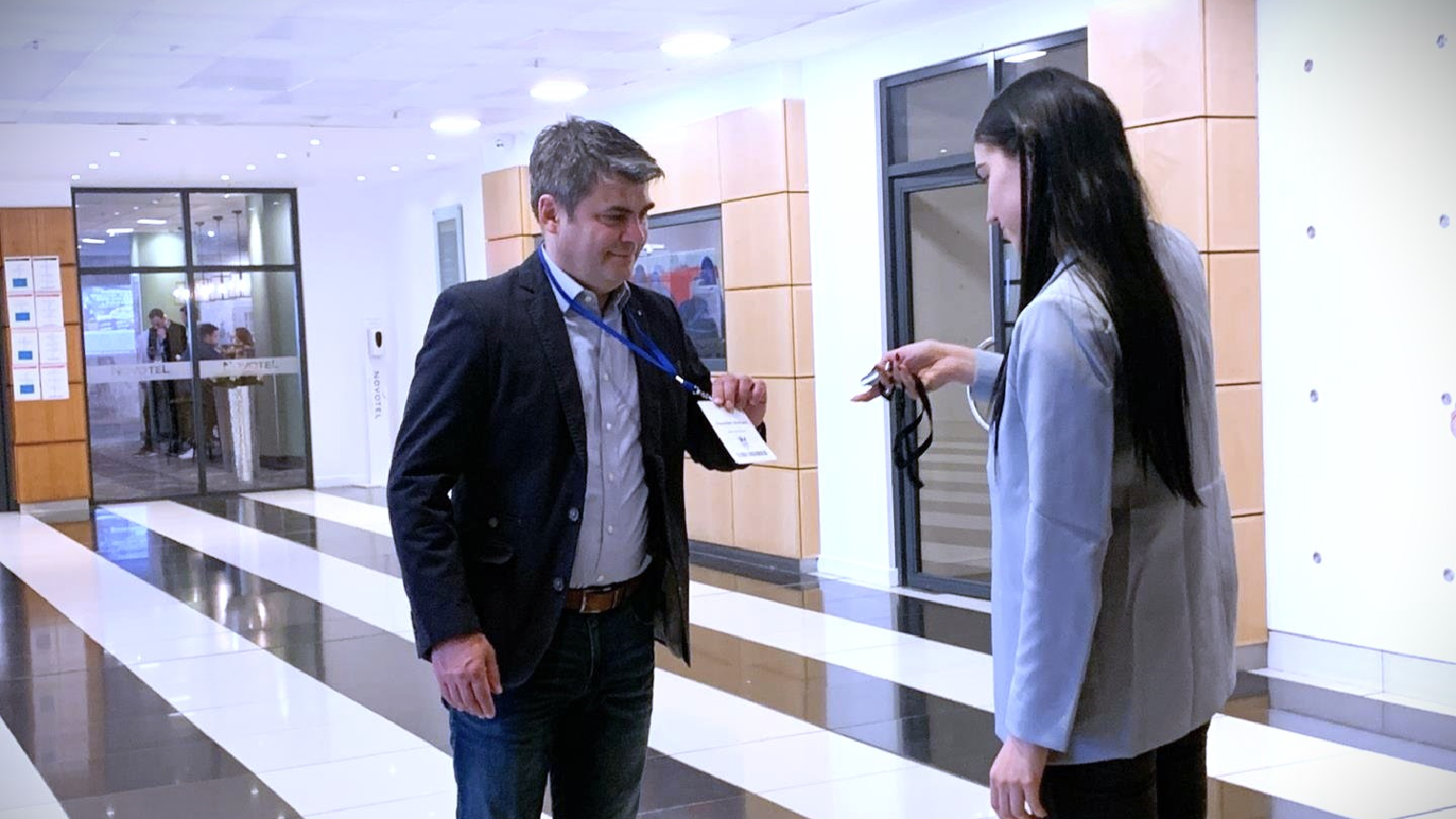The pain of badge scanning

The pain of badge scanning
At most conferences and corporate events, standard procedures such as badge scanning, rigid check-ins, and transactional interactions are the norm. While these processes may seem efficient from an operational perspective, they often detract from the delegate experience, making events feel impersonal, bureaucratic, and disengaging.
The reality is that event organizers need to focus on creating an environment where attendees feel connected, valued, and engaged—not one where they are treated like just another number in the system.
Let’s explore why traditional event procedures like badge scanning may work against delegate experience and what event organizers can do to shift the focus toward more meaningful interactions.
1. Badge Scanning: A Transactional Experience
Badge scanning is one of the most common procedures at events, whether it’s for entry into sessions, at exhibit booths, or during networking. While it’s useful for tracking attendance and lead generation, it reduces interactions to purely transactional exchanges:
The Problem: Delegates may feel like they are being monitored or tracked, which can be off-putting. The moment a delegate’s badge is scanned, it’s clear the goal is to capture data rather than build relationships.
The Alternative: Instead of focusing on tracking every movement, allow attendees to voluntarily share contact information through the event app or at their discretion. Encourage exhibitors and speakers to initiate conversations based on interest, rather than focusing on scanning as the primary mode of interaction.
2. Rigid Check-in Procedures: A Cold First Impression
The traditional check-in process often feels cold and mechanical, with delegates lining up, waiting to be scanned or processed before they can even step into the event:
The Problem: This sets a tone of formality and impersonal efficiency. Delegates feel like they’re just going through the motions, rather than being welcomed into a space designed for them.
The Alternative: Consider streamlining check-in with pre-event digital registration, allowing delegates to receive their badges or materials in advance. For a more welcoming experience, have greeters who can engage with attendees on a personal level, making them feel acknowledged and excited about the event from the start.
3. Tracking Delegate Behavior: A Loss of Freedom
Many events now use tracking technologies like RFID badges or apps that monitor attendee movement, session attendance, and exhibit visits:
The Problem: Delegates may feel like they’re under constant surveillance. It can create a sense of being watched rather than offering freedom to explore the event at their own pace and according to their interests.
The Alternative: Instead of tracking behavior, focus on creating spaces and activities that invite participation organically. Foster an environment where people want to engage because they find value, not because their activity is being recorded.
4. Over-Structured Networking: Forced and Artificial
Standard networking formats—such as speed networking or badge-based matchmaking—can feel forced and awkward, leaving delegates disconnected:
The Problem: These procedures prioritize efficiency over quality interactions. Delegates may feel rushed to network in a structured way, which can limit authentic conversations.
The Alternative: Create more relaxed, organic opportunities for networking. Host social spaces, lounges, or informal gatherings where delegates can meet on their own terms. Offer conversation starters or icebreakers to facilitate interaction, without the need for strict time limits or pre-arranged pairings.
5. Session Attendance Tracking: Discouraging Curiosity
Sessions are often tracked closely, with delegates needing to scan in or out to verify attendance:
The Problem: Apart from the rather obvious outcome of queues or lines, this can make attendees feel that they’re expected to stay put, rather than explore other areas of interest. It also discourages flexibility if someone wants to leave midway through a session.
The Alternative: Make sessions more dynamic and open-ended. Allow delegates to come and go freely, and make it easy for them to access on-demand content if they miss a portion of the presentation. Focus on creating engaging sessions that naturally encourage attendance, rather than enforcing it through scanning.
6. Post-Event Follow-Up: A Missed Opportunity for Authentic Connection
After many events, follow-up emails based on badge scans flood delegate inboxes:
The Problem: These automated emails are often impersonal, focusing more on sales pitches than the substance of the delegate’s experience or interests.
The Alternative: Personalize follow-up communications. If data is collected (via voluntary means), ensure it is used to craft personalized emails that reference specific sessions, discussions, or exhibitor interactions. Better yet, encourage exhibitors to follow up with meaningful, non-sales content, like insights from the event or resources that align with the delegate’s expressed interests.
The Shift to a Human-Centered Delegate Experience
The key to improving the delegate experience is to move away from systems that treat attendees like data points, and instead, prioritize authentic engagement. Here are some actionable steps to consider:
- Embrace Choice: Give delegates more control over how they share their information, network, and engage with the content.
- Focus on Quality over Quantity: Prioritize fewer, more meaningful interactions over tracking every movement.
- Humanize the Experience: Ensure that every touchpoint—whether it’s check-in, networking, or sessions—feels personal and focused on the delegate’s needs, rather than on operational efficiency.
Conclusion
By rethinking how standard event procedures like badge scanning and session tracking are implemented, event organizers can create more authentic, relaxed, and engaging environments.
Other technologies are available to achieve this, such as our event attendee tracking solution. Tailor made for conferences of all sizes, it provides an immediate read on session attendance and dwell time per session. And it’s very easy to set up, requiring only a single electric point and network connection.
Whichever methods are used, the goal should be to cultivate an event where delegates feel free to explore, connect, and participate in a way that suits their personal preferences and needs. When delegates feel less like data points and more like valued participants, the overall experience—and the event’s success—will improve dramatically.


